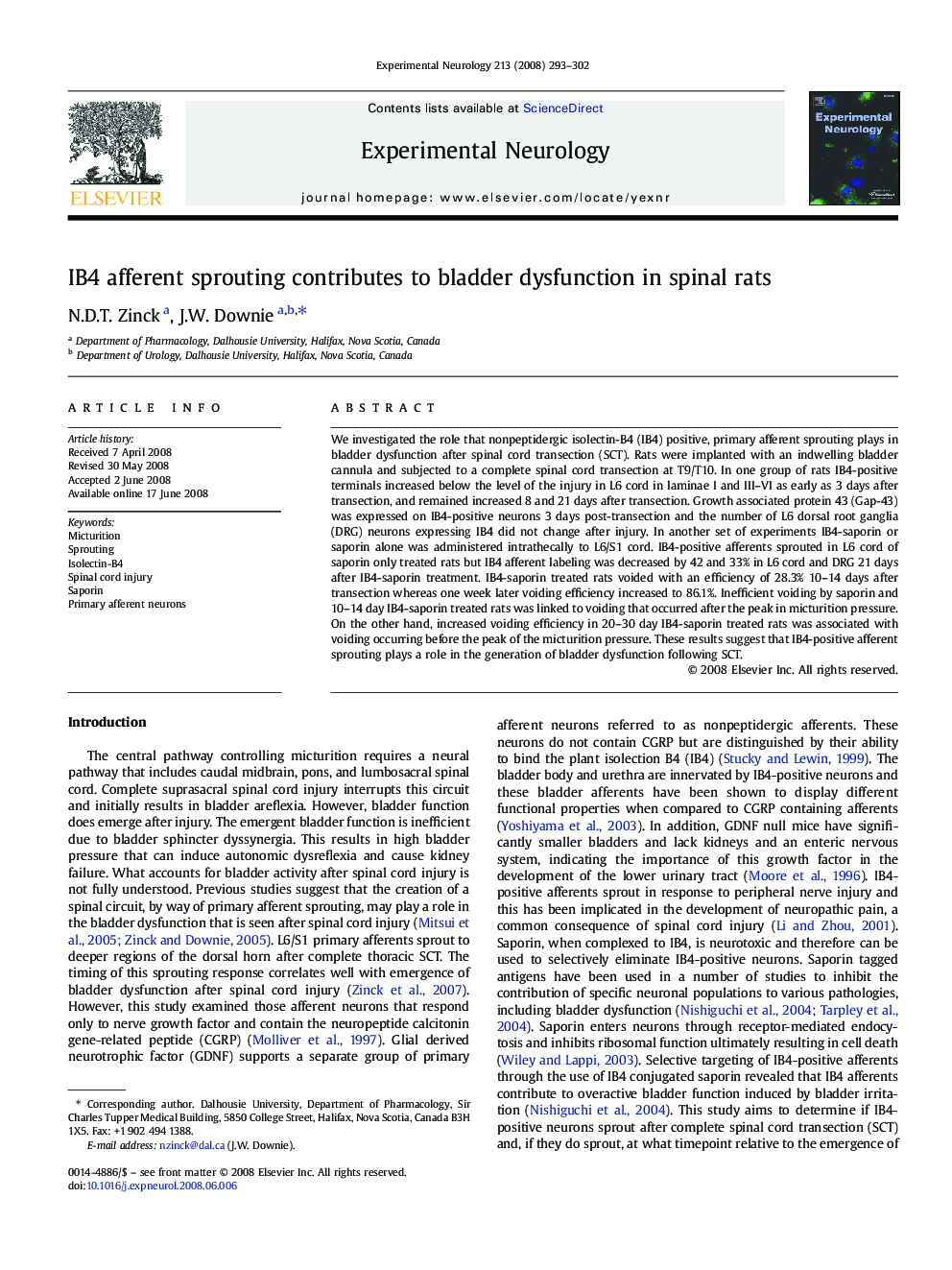| Article ID | Journal | Published Year | Pages | File Type |
|---|---|---|---|---|
| 6019455 | Experimental Neurology | 2008 | 10 Pages |
Abstract
We investigated the role that nonpeptidergic isolectin-B4 (IB4) positive, primary afferent sprouting plays in bladder dysfunction after spinal cord transection (SCT). Rats were implanted with an indwelling bladder cannula and subjected to a complete spinal cord transection at T9/T10. In one group of rats IB4-positive terminals increased below the level of the injury in L6 cord in laminae I and III-VI as early as 3Â days after transection, and remained increased 8 and 21Â days after transection. Growth associated protein 43 (Gap-43) was expressed on IB4-positive neurons 3Â days post-transection and the number of L6 dorsal root ganglia (DRG) neurons expressing IB4 did not change after injury. In another set of experiments IB4-saporin or saporin alone was administered intrathecally to L6/S1 cord. IB4-positive afferents sprouted in L6 cord of saporin only treated rats but IB4 afferent labeling was decreased by 42 and 33% in L6 cord and DRG 21Â days after IB4-saporin treatment. IB4-saporin treated rats voided with an efficiency of 28.3% 10-14Â days after transection whereas one week later voiding efficiency increased to 86.1%. Inefficient voiding by saporin and 10-14Â day IB4-saporin treated rats was linked to voiding that occurred after the peak in micturition pressure. On the other hand, increased voiding efficiency in 20-30Â day IB4-saporin treated rats was associated with voiding occurring before the peak of the micturition pressure. These results suggest that IB4-positive afferent sprouting plays a role in the generation of bladder dysfunction following SCT.
Related Topics
Life Sciences
Neuroscience
Neurology
Authors
N.D.T. Zinck, J.W. Downie,
